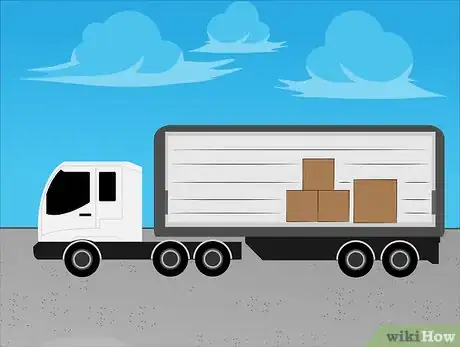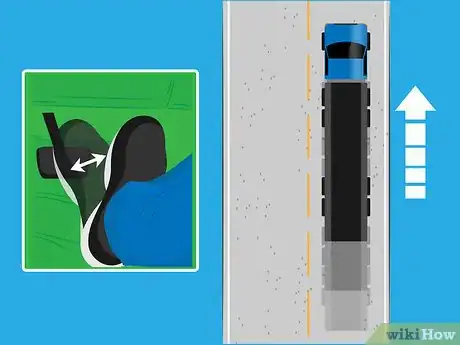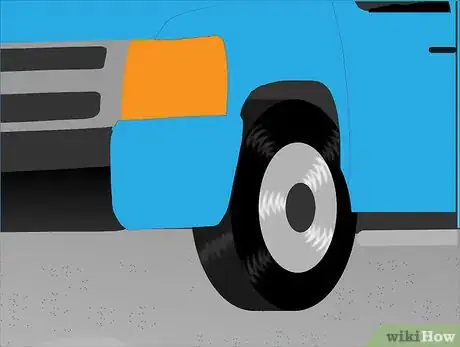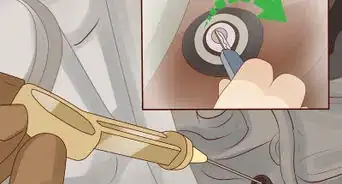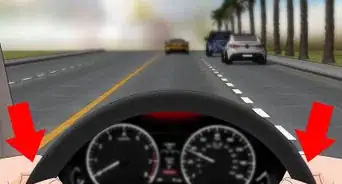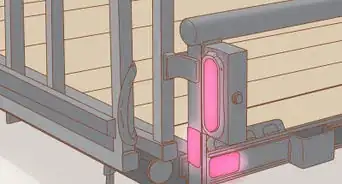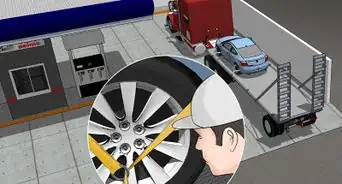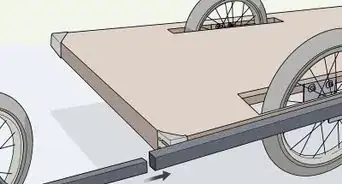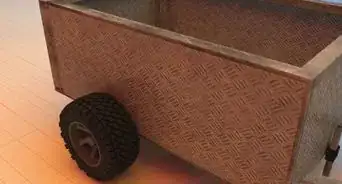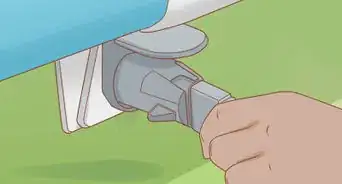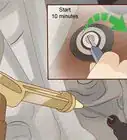X
wikiHow is a “wiki,” similar to Wikipedia, which means that many of our articles are co-written by multiple authors. To create this article, 16 people, some anonymous, worked to edit and improve it over time.
This article has been viewed 90,104 times.
Learn more...
Jackknifing occurs when a vehicle towing a trailer skids and its trailer pushing from behind spins it around until it collides with its own trailer. The jack knifed vehicle could then continue out of control causing further accidents. Here is an explanation of how jackknifing occurs and how to prevent it.
Steps
Method 1
Method 1 of 2:
Understand Jackknifing
-
1Understand what causes jackknifing. Jackknifing occurs when the towing vehicle skids. If the driver is unable to correct it in time, the trailer pushing from behind will continue to push the towing vehicle until it spins around.
-
2Understand that jackknifing is different from trailer slew or trailer swing. Here's the difference:
Advertisement
Method 2
Method 2 of 2:
Prevent Jackknifing
-
1Be wary of light loads. A heavily laden vehicle is unlikely to jackknife. Jackknifing usually occurs with empty trailers or when the weight of the load is badly distributed, providing too little traction where it's needed. The vehicle and trailer brakes are designed for a full load, and are far too powerful for an underweight trailer. When strong brakes are applied, the wheels could lock up, and cause skidding.
-
2Spread your braking over the longest possible distance, braking progressively and reducing your speed gradually. It helps to drive a safe distance behind other vehicles and to try to anticipate what may happen ahead, allowing yourself plenty of time to pull up, especially on slippery roads and when you're going downhill.
-
3Avoid having to brake or even decelerate on a curve. Apply your brakes while the vehicle is traveling in a straight line as you approach a curve. Slow down a little more than necessary, then release your brakes before you begin the turn. Apply a little power as you turn. This should prevent the drive wheels from losing traction. If you approach slowly enough, you'll find that you'll be able to speed up as you negotiate the curve.
- Downhill turns are especially prone to jackknifing. If you're going down a steep hill and wish to turn off to the left or right, don't assume that the trailer will follow you. The trailer tries to continue straight on down the hill due to its momentum and gravity. You must slow it right down or even come to a halt before turning. When you're satisfied that you've checked the trailer's momentum, then you can pull it around the corner.
-
4If you ever need to take avoiding action, don't brake and swerve at the same time. Brake first to slow the vehicle down as much as possible, then release the brakes in order to swerve. In this way, you'll remain in control of the vehicle. Once you've swerved, you can re-apply the brakes if necessary.[1]
- If you ever need to do an emergency stop, for example, if a child runs into the road in front of your truck, don't stamp on the brake pedal. You should press it. Then press the clutch pedal to prevent the truck from traveling further. Hold the steering wheel with your hands in the 10 minutes to 2 position, keeping your thumbs out of the wheel. Press them against the rim, and lock your elbows inward.
-
5Be very cautious about using your engine brake or retarder (exhaust brake / Jacobs brake / Telma / Voith etc.) on a slippery surface. This could lock up the drive axle and cause jackknifing. An engine brake or retarder only acts on one axle, whereas the brakes act on all of the wheels. If you need to use the retarder to descend a hill, but the road is slippery, slow the vehicle down by braking gently first, then apply the retarder carefully. The same would apply if you were to engage a low gear.
-
6Jackknifing starts as a skid, so do your utmost to avoid skidding. If, however, your vehicle starts to skid, take your foot off the brake immediately and correct the skid as you would with a rigid vehicle How to Control a Skidding Car. If it isn't corrected, it will be aggravated by the trailer pushing from behind and the vehicle will jackknife.[2]
-
7Keep both tractor and trailer properly maintained. Uneven brakes, worn tires and faulty suspension components increase the risk of losing control.
-
8Modern anti-lock braking systems, first developed for aircraft to stop them skidding on the runway, are now fitted to heavy vehicles. They can sense tire skid and automatically adjust braking force to prevent wheel lockup.[3]
Advertisement
Community Q&A
-
QuestionWhat is trailer sway?
 HelpingHand45Community AnswerTrailer sway is when the wind causes the trailer to move back and forth. This can also happen due to high speeds or bumps in the road.
HelpingHand45Community AnswerTrailer sway is when the wind causes the trailer to move back and forth. This can also happen due to high speeds or bumps in the road. -
QuestionCan something be done to a 2 wheeled trailer to stop it from hitting the side of the truck when backing up?
 Community AnswerWell, the longer the trailer tongue, the tighter angle you can have (when the trailer hits the truck backing up it is because the angle is too small). But you cannot easily change the tongue length of a trailer. Basically, you need to learn to back the trailer without getting the angle too tight. It isn't the trailer, it's the operator.
Community AnswerWell, the longer the trailer tongue, the tighter angle you can have (when the trailer hits the truck backing up it is because the angle is too small). But you cannot easily change the tongue length of a trailer. Basically, you need to learn to back the trailer without getting the angle too tight. It isn't the trailer, it's the operator.
Advertisement
Warnings
- Generally speaking, the shinier the road surface, the more slippery it is, but the following conditions are especially hazardous:
- A fine sprinkling of snow on the road surface, or worse, an icy road covered with a fine sprinkling of snow.
- In cold weather beware of the possibility of black ice. Black ice means invisible ice. A thin layer of ice forms around the particles of the road surface and therefore can't be seen.[4]
- A shower of rain after a long dry spell. Water mixes with the dust on the road surface. It bubbles and has the appearance of soapy water, and it's just as slippery.
- Fallen leaves on a wet road can cause a skid which could lead to jackknifing.
Advertisement
References
About This Article
Advertisement


